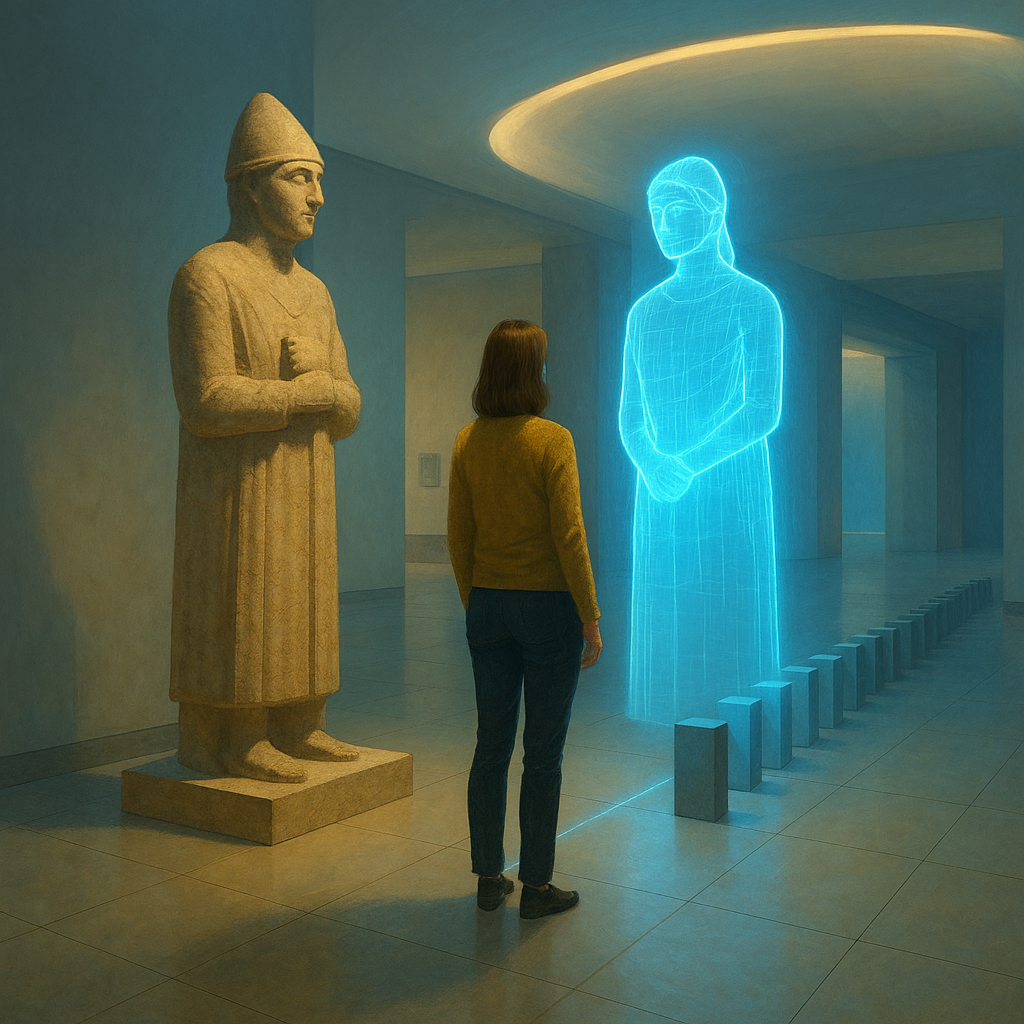How do you create the most connected visitor experience possible — without turning the museum into a gadget showroom?
That was the challenge facing the Musée National de l’Histoire du Québec (MNHQ) when it decided to rethink its entire visitor journey.
The ambition was clear: make technology serve meaning, not the other way around.
A connected experience rooted in content
The MNHQ wanted to design an experience that connected visitors to the stories behind the exhibits — not just through screens, but through context, flow, and relevance.
Rather than multiplying touchpoints or flashy devices, the project focused on clarity and continuity:
- fluid transitions between spaces and narratives,
- personalized content without intrusion,
- and a sense of coherence between the physical and digital experience.
The goal wasn’t to impress. It was to make discovery feel effortless.
The key: an open, flexible foundation
To support this ambition, the technological foundation had to match the museum’s reality — financial, operational, and cultural.
That’s why open-source technologies became the obvious choice:
they offered the balance between cost control, technical capability, and the flexibility needed to evolve over time.
More importantly, this approach kept ownership and knowledge within the institution — allowing the MNHQ to adapt, expand, and innovate without depending entirely on external vendors.
Mini-story: the invisible connection
One of the first pilot experiences connected historical artifacts with live content drawn from the museum’s archives.
Visitors could view, on their own device, a layered story of the object they were standing before — blending narrative, context, and emotion.
The magic wasn’t in the screen.
It was in the seamless integration between content, technology, and the visitor’s natural curiosity.
A museum built for evolution
By designing a system where data, architecture, and experience all speak the same language, the MNHQ created more than a connected museum — it built a learning ecosystem.
Each new exhibition can reuse and enrich what already exists.
Each interaction feeds insight for the next experience.
That’s what makes this project truly modern: it doesn’t chase innovation; it cultivates it.
Metrics that matter
- Number of content elements re-used across exhibitions.
- Visitor engagement time per story viewed.
- Reduction in technical dependency and integration costs.
And after?
The MNHQ didn’t try to be “the most digital” museum in Canada.
It aimed to be the most meaningful.
In an age where technology often overshadows purpose, this project stands as a reminder:
innovation isn’t about adding more — it’s about connecting better.
FAQ
Why open source instead of commercial platforms?
Because open systems align better with the museum’s needs: realistic budgets, adaptable architectures, and long-term autonomy.
Wasn’t the goal to impress visitors with technology?
No — the goal was to deepen engagement through simplicity and relevance, not spectacle.
How does the system evolve?
Each new exhibit adds data, links, and possibilities. The system learns — just like the institution itself.
